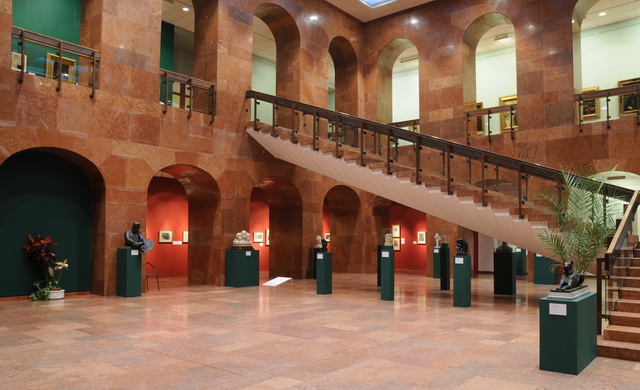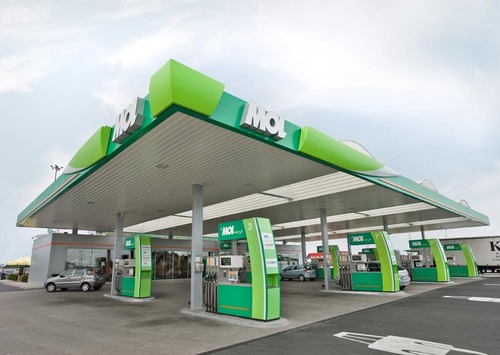Fine vision, seismic shift for National Gallery

László Baán, General Director of the Museum of Fine Arts, has been entrusted with the management of a project to relocate the Hungarian National Gallery. The government decided in July of this year to move the gallery out of the Buda Castle, in order to make way for the establishment of a government quarter that would include the building that currently houses the national art collection. The relocation of the National Gallery alone would make necessary the construction of a new museum building. Baán, however, has expanded the project even further, and his ambitious concept now includes the establishment of an entire museum cluster with five new buildings located near City Park: the new homes for the National Gallery – Ludwig Museum, the Hungarian Museum of Photography, a new Ethnographical Museum, the Hungarian Museum of Architecture, and the Museum of Hungarian Music. The Budapest Business Journal talked to him about the latest with this mega project.
BBJ: The unification of the National Gallery and the Museum of Fine Arts was decreed back in 2011. What can you tell us about the new concept of the National Gallery in terms of its content? Originally, the National Gallery housed a collection of Hungarian art from the earliest times to the late 20th century, while the Museum of Fine Arts was home to an international collection. The two have now been united. It is an open question what the function of the new National Gallery building will be. Would it not be better to prepare an artistic concept before the international architectural competition for the museum buildings is announced at the end of this year? Are there preparatory meetings going on in which the opinions of art experts are represented?
Baán: The concept of the New National Gallery (ÚNG) is going to be prepared by a joint team consisting of experts from the National Gallery and the Museum of Fine Arts, as well delegates sent by the most important professional organizations in the museum business. (The concepts of the cluster’s other four museums are going to be worked out by six- to 14-member expert teams that will include the directors of the institutions, representatives of professional organizations, and invited experts.) In the international architectural competition to be announced in a few months, architects will have to adapt their plans to the specified functional profiles of the museums. It goes without saying that no museum building can be planned without taking exposition concepts into consideration.
You mentioned that the New National Gallery would replace the present one. What does this mean if the collections themselves are no longer separated?
The present floor space of the National Gallery in the Buda Castle covers 30,000 square meters. The new building will have a similar-size floor space but with more rational land use and facility management indicators. A collection can be managed in a much more cost-efficient way if it is located in a purpose-designed building. The former Royal Palace, converted into the National Gallery in the 1970s at the technological level of that age, or the former Hungarian Supreme Court converted into the Ethnographical Museum in the same decade, did not in practice prove to be ideal solutions, and are increasingly anachronistic today.
How about the reconstruction of the present Museum of Fine Arts’ façade facing Dózsa György út? Why is that reconstruction project not part of the Budapest Liget concept?
The reconstruction of the Museum of Fine Arts is currently on the agenda, irrespective of the Liget Budapest Project. In recent years, the main façade of the building has been renovated; furthermore, all the halls housing temporary exhibitions and some of the halls devoted to the permanent exhibitions have been reconstructed, too. The renewal of the Egyptian exhibition’s space is scheduled for this year, as is the reconstruction of the Old Sculpture Collection.
Earlier, there was a plan to open the so-called Romanesque Hall of the Museum of Fine Arts to the public, and to relocate the restorers’ workshop from the museum to a nearby complex that formerly functioned as the Szabolcs utca Hospital. Why is this element not mentioned in the current plans?
The Romanesque Hall had not been accessible to the public since World War II because it has been occupied by the restorers’ workshop. Now, however, it has been made part of the Liget Budapest Project to establish a National Center for Artworks’ Storage and Restoration (abbreviated to OMRRK in Hungarian) in Szabolcs utca, which will make it possible to devote the Museum’s Romanesque Hall to other uses. The government has already instructed us to prepare the building permit plan and also provided the necessary funding for the establishment of the new museum cluster. Since the future location of the new Center for Storage and Restoration is not part of the City Park, it is not going to be affected by the construction; that is why the architectural idea competition evaluated in October this year did not deal with the relocation of the restorers’ workshop.
The new Museum of Photography is also designed to replace something, but which institution is it going to replace? Certainly the Kecskemét Photo Museum, but maybe also the Mai Manó Museum of Photography, and the Ernst Museum with its permanent Robert Capa collection as well?
Replacing the Mai Manó Museum and the Ernst Museum is not the goal of the future Museum of Photography. Not even the city of Kecskemét will be left without photographic exhibitions, as the present collection is rich enough to leave room for the Kecskemét complex to operate an exhibition space of its own. The aim of the construction of the new museum is not centralization, but the worthy placement of a national collection that boasts one of the most successful branches of Hungarian art internationally, namely photography. The new museum quarter is the most suitable location for that.
What will the public be able to hear and see in the future Hungarian Museum of Architecture and Museum of Hungarian Music? In what ways will one be more than an archive of architectural documentation, and the other more than a library of musical scores?
They are going to be something completely different, and they are going to be much more than what you have suggested. Both the Hungarian Museum of Architecture and the House of Hungarian Music are going to house permanent as well as temporary exhibitions that will introduce visitors into their specific fields; but what is even more important is that both museums are going to place great emphasis on interactive exhibitions and museum education. Their community spaces will enable both institutions to participate in the bustling life of the neighboring City Park, which will be re-landscaped as well.
Related: The doubts of a winner
Architect István Berkeczi was one of the winners of the architectural ideas competition concluded in October this year. In spite of that, and simultaneously with receiving his prize, he expressed his doubts on the pages of Építészfórum, an online forum of the Hungarian architectural profession. His concerns can be summed up as follows.
• For those visitors who come from far away, visiting the museums will become too costly. Since free parking areas presently available on the edge of the City Park will cease to exist, and new underground parking facilities – with parking fees – will be established instead, most of the car-bound public will find the City Park area too expensive to visit.
• Over-concentration of museums. The planned City Park institutions might pull away visitors from those areas that presently house the museums. The Buda Castle will lose one of its main tourism magnets if the National Gallery moves out; so will Kossuth Square without the Ethnographical Museum; even MÜPA (the Palace of the Arts) will be less attractive without the Ludwig Museum.
• The planned continuation of the Városligeti fasor boulevard into City Park is an ill-conceived idea. It will damage the greenery, and it will divide the park into two halves architecturally.
• There is a chance that, in the long term, there will not be enough funding available for the high-level financing of the new institutions. The maintenance of the institutions will draw funding away from project financing.
SUPPORT THE BUDAPEST BUSINESS JOURNAL
Producing journalism that is worthy of the name is a costly business. For 27 years, the publishers, editors and reporters of the Budapest Business Journal have striven to bring you business news that works, information that you can trust, that is factual, accurate and presented without fear or favor.
Newspaper organizations across the globe have struggled to find a business model that allows them to continue to excel, without compromising their ability to perform. Most recently, some have experimented with the idea of involving their most important stakeholders, their readers.
We would like to offer that same opportunity to our readers. We would like to invite you to help us deliver the quality business journalism you require. Hit our Support the BBJ button and you can choose the how much and how often you send us your contributions.





.jpg)

